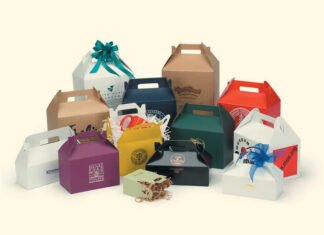In today’s environmentally-conscious market, businesses and organizations are increasingly looking for sustainable practices that align with their commitment to ecological stewardship. Event organizers, who often seek customized items for conferences and events, are particularly interested in innovative solutions that minimize environmental impact. Laser marking and engraving have emerged as popular methods for customizing materials, but traditional practices often raise concerns due to energy use and waste production. Fortunately, eco-friendly options are now available, offering a path forward that aligns with sustainability goals.
Sustainable Materials for Laser Marking and Engraving
One of the primary considerations in eco-friendly laser marking and engraving is the choice of material. Sustainable materials that are commonly used include:
- Bamboo: Known for its rapid growth and minimal water use, bamboo is a favorite for laser cutting projects. It is both renewable and biodegradable, making it an excellent choice for environmentally conscious event organizers.
- Recycled plastics: Utilizing recycled plastics for laser engraving helps reduce landfill waste. These plastics can be sourced from consumer waste, providing a new life for materials that would otherwise contribute to environmental pollution.
- FSC-certified wood: The Forest Stewardship Council (FSC) certifies wood that has been harvested in a responsible manner. Using FSC-certified wood ensures that the product lifecycle promotes sustainable forest management.
Advances in Laser Technology
Technological advancements have led to more energy-efficient laser cutters that reduce the environmental footprint of the cutting and engraving process. Newer models are designed to consume less energy and operate more cleanly, which is crucial for reducing greenhouse gas emissions. According to a report by the Environmental Protection Agency (EPA), energy-efficient technologies in manufacturing processes can lead to a reduction in energy consumption by up to 30% (EPA, 2021).
Chemicals and Air Quality
The process of laser engraving can produce fumes and particulate matter, depending on the material being engraved. To combat this, eco-friendly laser systems are equipped with enhanced ventilation systems that filter out harmful particles and improve air quality in the workspace. Additionally, the use of non-toxic and biodegradable chemicals for cleaning and maintaining laser equipment is on the rise, further reducing the ecological impact of these processes.
Border Pad & Print: Your Partner in Eco-Friendly Customization
Border Pad & Print stands at the forefront of sustainable practices in laser marking for event organizers. By investing in advanced, energy-efficient laser technologies and prioritizing sustainable materials, we offer event organizers the ability to customize items for their events and conferences with minimal environmental impact.
Waste Reduction Strategies
Implementing waste reduction strategies is critical in aligning with sustainability goals. Many businesses opt for laser marking because it is precise, reducing material wastage compared to traditional mechanical cutting methods. Additionally, the ability to use software to optimize layouts on materials further diminishes waste, ensuring that every piece of material is used efficiently.
Eco-Friendly Packaging
When delivering laser-cut and engraved items, eco-friendly packaging solutions can be employed to minimize waste. These include recyclable cardboard, biodegradable packing peanuts, and paper tapes. Such practices not only align with sustainability goals but also resonate with the values of customers who prioritize environmental responsibility.
Alternative Sustainable Materials
Beyond the commonly used bamboo and recycled plastics, there are other materials that hold promise for sustainable laser cutting and engraving:
- Cork: Cork is a highly renewable material harvested from the bark of cork oak trees without harming the tree itself. It regenerates every nine years, offering a sustainable option for event giveaways, such as coasters or notice boards.
- Recycled metal: Using recycled metal for engraving reduces the demand for virgin mining and lowers the carbon footprint associated with extraction and processing.
- Organic fabrics: For textile applications, organic fabrics like cotton, silk, or felt can be laser cut or engraved for creating custom apparel or decorative items, minimizing the impact on the environment.
Enhancing Energy Efficiency
While newer models of laser cutters are designed to be more energy-efficient, additional practices can help in further reducing energy consumption:
- Scheduled operations: Running laser cutters on a scheduled basis and during off-peak energy hours can reduce energy costs and strain on the electrical grid.
- Solar-powered operations: Integrating solar panels to power laser cutting machinery can drastically reduce a facility’s reliance on non-renewable energy sources.
- Upgrading older equipment: Retrofitting or replacing older laser cutters with newer, more efficient models can lead to significant energy savings and better performance.
Lifecycle Assessment and Recycling
Understanding the full lifecycle of the products created through laser cutting and engraving is vital for sustainability. A lifecycle assessment (LCA) can help identify the most impactful stages of a product’s life, from raw material extraction to end-of-life disposal. Encouraging recycling and reuse of products after events can also contribute to sustainability goals.
Local Sourcing and Supply Chains
Choosing to source materials locally reduces transportation emissions associated with shipping goods from far distances. Working with local suppliers who follow sustainable practices can further enhance the overall sustainability of laser cutting and engraving projects. Transparent supply chains that prioritize environmental, social, and governance (ESG) criteria will align better with the sustainability objectives of eco-conscious event organizers.
Advanced Software for Design Optimization
Leveraging advanced design software plays a critical role in minimizing waste during the laser cutting process. These tools can optimize material layout, cut paths, and nesting of parts to ensure that the maximum number of products is produced from the minimum amount of material, thus reducing waste and improving overall efficiency.
Incorporating Client Engagement in Sustainability
Engaging clients in the sustainability process can also play a pivotal role. By educating clients about the benefits of sustainable materials and processes, businesses can encourage more environmentally-friendly choices in the design and production stages. This collaborative approach not only enhances client satisfaction but also promotes broader adoption of green practices in event planning and management.
FAQs
Q1: What are the most sustainable materials for laser cutting and engraving? A1: Bamboo, recycled plastics, and FSC-certified wood are among the most sustainable choices for these processes due to their renewable and biodegradable properties.
Q2: How does laser marking reduce material waste? A2: Laser cutting is extremely precise, which minimizes excess waste by maximizing the use of each material sheet. Software optimization further enhances this efficiency.
Q3: Can laser engraving be harmful to the environment? A3: If not managed properly, laser engraving can produce harmful emissions. However, using advanced ventilation systems and eco-friendly materials can significantly mitigate these effects.
Q4: Are there energy-efficient laser cutters? A4: Yes, modern laser cutters are designed to be more energy-efficient, consuming less power and reducing operational costs and environmental impact.
Conclusion
The intersection of technology and sustainability is paving the way for new practices in laser marking and engraving, allowing businesses and organizations to remain competitive while adhering to their environmental commitments. With the adoption of sustainable materials, advances in technology, and strategic waste reduction, the process of customizing promotional items can be both creative and eco-friendly. As event organizers continue to seek innovative and responsible solutions, the importance of choosing the right partners, becomes increasingly apparent. Are you ready to align your next event with the best in sustainable practices?
Also know about





